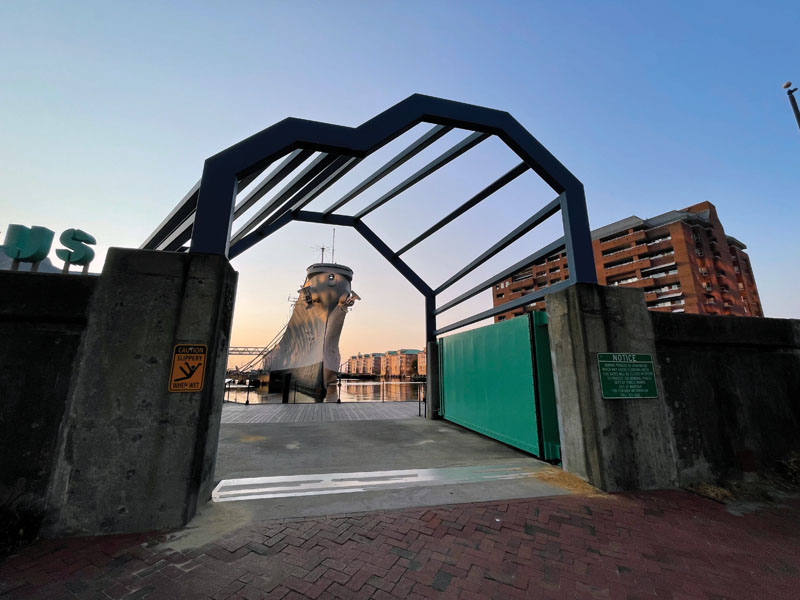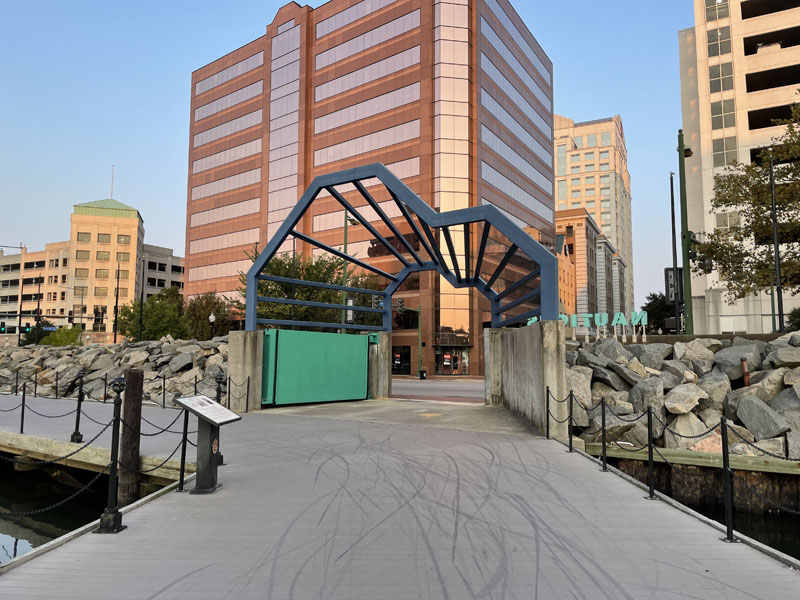The Chesapeake Bay and sea level rise
Of the many climate change impacts that will affect the Chesapeake Bay, sea level rise may be one of the most profound.

Sea level rise is caused by two main factors, according to NOAA: the first is melting glaciers and ice sheets adding water to the oceans. The second is the thermal expansion of water—essentially, as the oceans get warmer, the water in them will occupy more space. If we continue emitting as much carbon into the atmosphere as we are currently and the planet’s temperature increases accordingly, NOAA estimates that sea level could rise by more than seven feet by the end of the century. That projection may seem reserved for the distant future—the end of the century is still a ways off, after all. But some regions have already started feeling the impacts.
Hampton Roads at the southern end of the Bay is one of these regions. As a resident of Norfolk, VA, one of the seven cities of Hampton Roads, I am always struck by the influence of flooding on the character of the city. Every house in my neighborhood is elevated on several feet of concrete. No one has a basement. The center of downtown is guarded by a seawall and floodgates. Pumping stations abound.
Flooding is a regular occurrence here, making the threat of sea level rise difficult to ignore. The City of Norfolk and the Army Corps of Engineers have announced several multi-million dollar plans to continue improving infrastructure to stave off sea level rise. While it is certainly positive that the city is taking proactive steps, the threat may still be too imminent. Norfolk’s somewhat contentious Vision 2100 plan categorizes some neighborhoods as essentially sacrificial—too difficult or costly to save.
A study by the Union of Concerned Scientists (UCS) found that 248 houses in Norfolk are at risk of total inundation by 2030. That number jumps to 2607 by 2060, and neither figure accounts for houses at risk of partial inundation or storm surge flooding. The UCS also estimates that 60 percent of Naval Station Norfolk will be exposed to regular tidal flooding by the end of the century and that 95 percent of it would be submerged by 10 feet or more during a Category 4 hurricane, even with the Navy’s $21 billion plan to bolster the base’s infrastructure. Langley Air Force Base in Hampton faces an even bleaker prospect, with estimates that the base would experience flooding an average of 280 times per year by 2050.
It is fitting, then, that Hampton Roads is subject to national attention regarding the issue of sea level rise. Norfolk was featured in the most recent “National Climate Assessment” and the 2022 OCEANS Conference and Exposition, a United Nations-endorsed biannual conference that brings together the brightest minds in ocean science and policy, will take place in Hampton Roads October 17 through 22 with the theme “Resilient Coasts: Adapting Today to Secure Tomorrow.” With representatives from NASA, Navy, Old Dominion University, and other leaders in coastal resilience, residents hope that some innovative ideas come out of this conference.

Sea level rise will affect everyone in the Chesapeake Bay area differently, depending on proximity to the water, access to financial resources, and other factors. While Norfolk is at particularly high risk, Annapolis, Baltimore, and other areas of the Bay won’t be too far behind. Sailors will likely be among the first to notice changes, given the amount of time we spend on and near the water. Here are some action items:
- Keeping your boat in a marina with floating docks, well-maintained bulkheads, and access roads that are high and dry may help you maintain access to your boat in the event of a sea level rise-exacerbated flood.
- Take storm preparation seriously: have extra dock lines ready and always check on your boat before and after a major storm or flood.
- Investment in natural shoreline protection, such as wetland and oyster reef restoration, can help reduce sea level rise-exacerbated erosion and protect shorelines from higher waves and storm surges. There are a multitude of organizations around the Bay that work on natural shoreline protection projects, such as the Chesapeake Bay Foundation, that accept volunteers and have resources available to help you build a living shoreline for your own waterfront property.
- Simply staying engaged with the issue may be one of the most important things sailors can do: stay up to date on what your state and local governments are doing to protect your community, engage with organizations dedicated to sea level rise adaptation if you can, and continue to stay informed.
With planning and cooperation, the Bay and its shorelines can continue to be enjoyed for generations to come.
Additional Resources:
NOAA has excellent resources to learn more about sea level rise, including its Sea Level Rise Viewer, which allows you to simulate what different amounts of sea level rise would look like for communities around the country.
About the Author: A recent graduate of Colgate University, Kelsey Bonham studied climate change and enviornmental justice. When not writing for SpinSheet, she works as an environmental educator with the Elizabeth River Project in Norfolk, VA.




